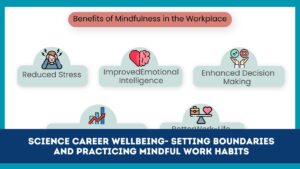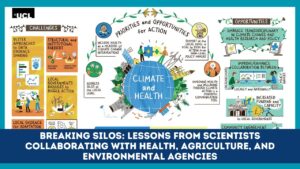In high-pressure environments such as laboratories and field operations, burnout is a pervasive risk, manifesting as emotional exhaustion, cynicism, and reduced professional efficacy—precisely the markers of occupational burnout defined by leading health authorities.
Recent global surveys alarmingly reveal that 85% of workers experience burnout symptoms, and nearly half have taken time off for mental health reasons. Young professionals are especially affected.
Tackling this issue depends not just on systemic change but also on adopting small, consistent daily habits that nurture well-being—and help teams flourish sustainably.
Understand Burnout’s Hidden Toll
Burnout’s impacts are more profound than occasional fatigue: it includes chronic energy depletion, mental disengagement, and diminished performance.
In lab settings, burnout is often triggered by unmanageable workloads, lack of recognition, and staffing shortages.
When burnout spreads across teams, it’s not just morale—it’s safety and productivity that suffer.
Sustained stress can also escalate into physical health issues like heart disease and mental health decline.
Why Small Daily Habits Matter
While broad organizational reforms are essential, micro-level daily habits offer accessible, immediate relief.
These micro-interventions—whether individual or team-oriented—serve as daily resets.
Research underscores how moderate physical activity (like brisk walks or yoga) reduces emotional exhaustion and boosts job satisfaction.
Likewise, simple practices like taking short technology breaks, breathing exercises, or mindful pauses can significantly improve emotional resilience and mental clarity.
Habits That Build Balance in Lab & Field Environments
Moderate Movement Breaks
- Why it helps: Revitalizes mood, improves focus, and decreases emotional exhaustion.
- How to embed: Schedule brief stretch or walk sessions between experiments or data collection; even 5-minute breaks matter.
Mindful Pausing & Breathwork
- Why it helps: Dims stress, nurtures calm, and reinforces psychological safety in high-intensity environments.
- How to embed: Begin each shift with a one-minute breathing exercise or group mindful pause to normalize self-care.
Consistent Break Routines
- Why it helps: Counteracts prolonged mental strain and enhances cognitive recovery.
- How to embed: Promote micro-breaks—short but intentional—like stepping outside or pacing the hallway every hour.
Hydration & Balanced Snacking
- Why it helps: Supports energy stability, hydration, and brain function, forming a foundation for sustained performance.
- How to embed: Keep water and healthy snack packs accessible in work zones, encouraging small, frequent nourishment.
Daily Check-Ins or Stand-Ups
- Why it helps: Builds team cohesion, collective psychosocial safety, and helps catch early warning signs of stress.
- How to embed: Hold brief morning or shift handover check-ins focusing not just on tasks but also on team well-being.
Boundary Setting & Disconnect Time
- Why it helps: Reinforces a healthier work-life balance, essential in preventing burnout’s escalation.
- How to embed: Define and respect switch-off hours, including digital disconnect policies post-shift.
Quick-View Habit and Benefit Table
| Daily Habit | Purpose | Implementation Tip |
|---|---|---|
| Moderate Movement | Reduces emotional burnout; enhances energy | Short walks or stretches between tasks |
| Mindful Breathing | Calms stress and fosters psychological safety | One-minute group pauses at shift start |
| Frequent Micro-Breaks | Supports cognitive recovery | Break every hour—rest or gaze outside |
| Hydration & Nutritious Snacking | Stabilizes energy and focus | Keep water and fruit/healthy snacks close |
| Daily Team Check-Ins | Builds connection and early stress detection | Brief, well-being oriented huddle |
| Work Boundary Setting | Protects mental rest and clarity | Encourage shutdown rituals and off-hours |
Embedding These Habits From Within and Beyond
Individual Level
- Practice self-monitoring and pause when early fatigue or negativity surfaces.
- Empower yourself to step away for a short breath or water break — this is not indulgent but essential.
Team Level
- Initiate a shared hydration/snack station, encouraging communal self-care without stigma.
- Rotate a “well-being champion” role, prompting daily mini-check-ins or shared wellness reminders.
Organizational Layer
- Leaders should model these behaviors, signaling that self-care and balance are expected, not optional.
- Embed these habits into shift protocols, SOPs, and safety checks to make them routine and normalized.
Synergy: Combining Habitual and Systemic Solutions
Practices like daily breathing, moderated movement, and regular breaks grow stronger when combined with organizational culture and policy:
- Supportive leadership fosters psychosocial safety, shown to reduce burnout, job strain, absenteeism, and presenteeism.
- Transparent, equitable frameworks around workload, control, reward, community, fairness, and values underpin sustainable well-being.
- Coordinated micro-habits and structural interventions create a virtuous cycle: individuals feel safer to care for themselves; organizations benefit from lower turnover, higher engagement, and greater safety.
Why This Matters Now More Than Ever
- With roughly 85% of workers reporting burnout symptoms and many taking time off, the cost in well-being and productivity is urgent.
- Young professionals, particularly within lab and field teams, are disproportionately affected, threatening long-term talent retention.
- Building balance over burnout, powered by accessible daily habits, is both preventive and restorative—a sustainable path forward for individuals, teams, and systems.
Burnout in lab and field teams is not a personal failing—it’s a systemic challenge.
Yet, part of the solution lies in tiny daily rituals: moderate movement, breathing pauses, hydration, micro-breaks, team check-ins, and boundary-setting.
These micro-habits, embedded consistently and supported by leadership and peer culture, bolster resilience, morale, and well-being.
Together with organizational commitment—addressing workload equity, recognition, autonomy, and psychosocial safety—small habits can transform burnout into lasting balance.
From lab benches to field sites, empowered teams don’t just survive—they thrive.
Frequently Asked Questions
1. How can small habits really reduce burnout in technically demanding environments like labs or fieldwork?
Small habits activate physical recovery, mental reset, and emotional grounding—serving as reliable checkpoints through intensive tasks. When practiced daily, they become resilience-building anchors amid pressure.
2. What if my workplace culture doesn’t support micro-breaks or mindful pauses?
Start small—share your own micro-break routine openly, perhaps invite a colleague to join. Over time, such subtle modeling signals to others that well-being is valued, laying groundwork for broader cultural shifts.
3. Can these habits completely replace organizational changes aimed at reducing burnout?
Not at all. They should complement—not substitute—structural changes. For sustainable impact, micro-habits must pair with efforts that address workload, team culture, autonomy, fairness, and leadership support.



